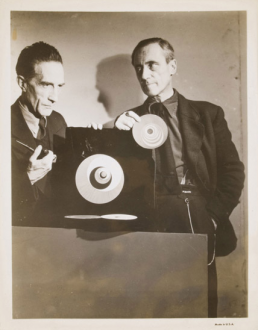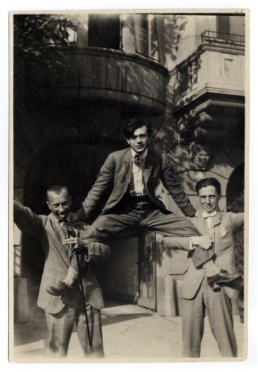Hans Richter

Hans Richter (1888–1976) was a German artist and film maker. Born in Berlin, Richter was one of the first to make abstract feature films. He studied art in Paris and was attracted by the cubist and surrealist schools. In Zurich in 1916 he participated in the Dada movement and later joined Viking Eggeling, a Swedish painter, in making abstract films. His "scroll paintings," inspired by a desire to express Bach's fugues visually, was the forerunner of Rhythm 21 (c1923-25), which consisted of squares hypnotically regrouping themselves into evolving sets. Later films employed surrealistic glass eyes and bowler hats flying through the air. Richter was forced to flee from Germany, while he was making an anti-Nazi film, and he settled in the United States, where he produced Dreams that Money Can Buy (1946), a surrealistic fantasy. Among his other well-known experimental films were 8 × 8 (1947) involving squares on a chess board, and Dadascope (1961). His book Dada – Kunst und Antikunst, published in 1964, became a classic which was followed two years later by an exhibition that toured internationally, Dada 1916–1966: Documents of the International Dada Movement. Richter served as head of the Institute of Film Technique at the City College of New York (1943–56) and then specialized in teaching documentary film making. (Source)
Selected films
- Rhythmus 21, 3 min, c1923-25. [1]
- Rhythmus 23, 3 min, c1923-25.
- Vormittagsspuk, 9 min, 1928.
- Dreams That Money Can Buy, 80 min, 1947.
Literature
- Stephen C. Foster (ed.), Hans Richter: Activism, Modernism, and the Avant-Garde, MIT Press, with University of Iowa Museum of Art, 1998.
